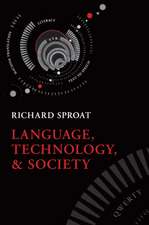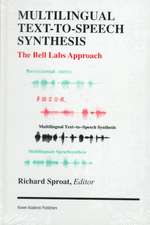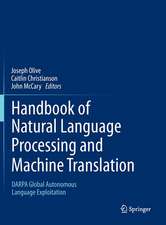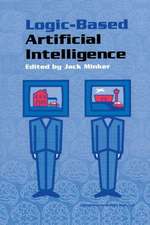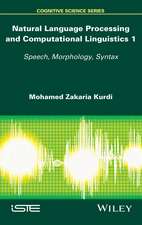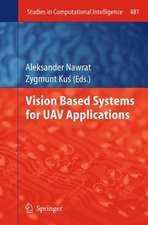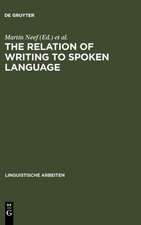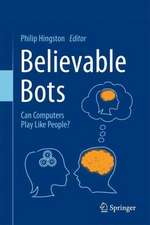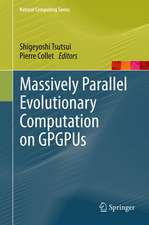Progress in Speech Synthesis
Editat de Jan P.H. van Santen, Richard Sproat, Joseph Olive, Julia Hirschbergen Limba Engleză Hardback – 19 dec 1996
Preț: 1240.79 lei
Preț vechi: 1513.16 lei
-18% Nou
Puncte Express: 1861
Preț estimativ în valută:
237.42€ • 247.89$ • 196.50£
237.42€ • 247.89$ • 196.50£
Carte tipărită la comandă
Livrare economică 05-19 aprilie
Preluare comenzi: 021 569.72.76
Specificații
ISBN-13: 9780387947013
ISBN-10: 0387947019
Pagini: 598
Ilustrații: XXII, 598 p.
Dimensiuni: 155 x 235 x 35 mm
Greutate: 1.11 kg
Ediția:1997
Editura: Springer
Colecția Springer
Locul publicării:New York, NY, United States
ISBN-10: 0387947019
Pagini: 598
Ilustrații: XXII, 598 p.
Dimensiuni: 155 x 235 x 35 mm
Greutate: 1.11 kg
Ediția:1997
Editura: Springer
Colecția Springer
Locul publicării:New York, NY, United States
Public țintă
ResearchDescriere
For a machine to convert text into sounds that humans can understand as speech requires an enormous range of components, from abstract analysis of discourse structure to synthesis and modulation of the acoustic output. Work in the field is thus inherently interdisciplinary, involving linguistics, computer science, acoustics, and psychology. This collection of articles by leading researchers in each of the fields involved in text-to-speech synthesis provides a picture of recent work in laboratories throughout the world and of the problems and challenges that remain. By providing samples of synthesized speech as well as video demonstrations for several of the synthesizers discussed, the book will also allow the reader to judge what all the work adds up to -- that is, how good is the synthetic speech we can now produce? Topics covered include: > Signal processing and source modeling > Linguistic analysis > Articulatory synthesis and visual speech > Concatenative synthesis and automated segmentation > Prosodic analysis of natural speech > Synthesis of prosody > Evaluation and perception > Systems and applications.
Cuprins
1. Section Introduction: Signal Processing and Source Modelling; 2. Synthesizing Allophonic Glottaliztion; 3. Text-to-Speech Synthesis With Dynamic Control of Speech; 4. Modifiction of the the Aperiodic Component of Speech Signals for Synthesis; 5. On the Use of a Sinusoidal Model for Speech Synthesis in Text-to-Speech; 6. Section Introduction: The Analysis of Text in Text-to-Speech Synthesis; 7. Language-Independent Data-Oriented Grapheme-to Phoneme Conversion; 8. All-Prosodic Speech Synthesis; 9. A Model of Timing for Non-Segmental Phonological Structure; 10. a Complete Linguistic analysis for an Italian Text-to-Speech System; 11. Discourse Structural Constraints on Accent in Narrative; 12. Homograph Disambiguation in Text-to-Speech Synthesis; 13. Section Introduction: Talking Heads in Speech Synthesis; 14. Section Introduction: Articulatory Synthesis and Visual Speech: Bridging the Gap Between Speech Science and Speech Applications; 15. Speech Models and Speech Synthesis; 16. A 3D Model of the Lips and of the Jaw for Visual Speech Synthesis; 17. A Framework for Synthesis of Segments based on Pseudo-articulatory parameters; 18. Biomechanical and Physiologically based Speech Modeling; 19. Analysis-Synthesis and Intelligibility of a Talking Face; 20. Section Introduction: Concatenative Synthesis; 21. a Mixed Inventory Structure for German Concatenative Synthesis; 22. Automatic Speech Segmentation for Concatenative Inventory Selection; 23. Optimal Coupling of Diphones; 24. Prosody and the Selection of Source Unites for Concatenative Synthesis; 25. The Aligner: Texto to Speech Alighnment using Markov Models; 26. Section Introduction: Prosody nalysis of Natural Speech; 27. Section Introduction: Prosodic Analysis: A Dual Track?; 28. Automatic Extraction of F0 Control Rules Using Statistical Analysis; 29. Comparint Approaches to Pitch Contour Stylization for Speech Synthesis; 30. Generation of Pauses Withing the Z-Score Model.


